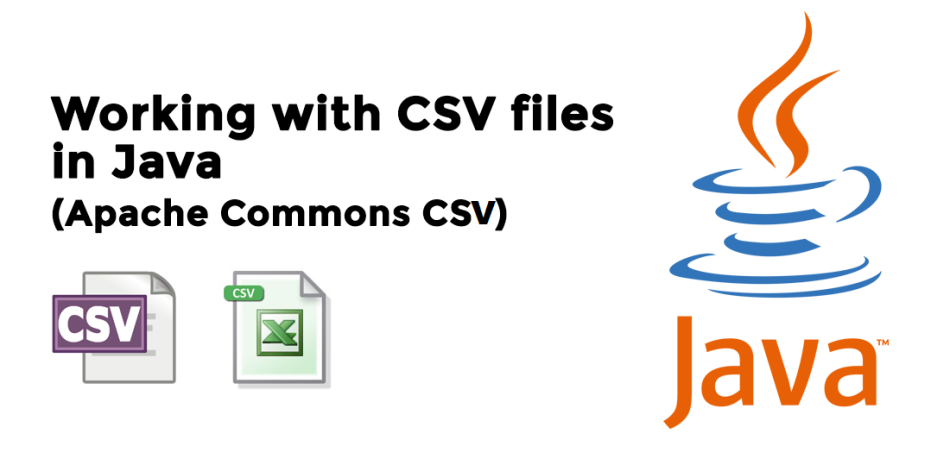Methods and Techniques for Working with CSV Files in Java
 Tuanhdotnet
Tuanhdotnet5 min read

1. Reading CSV Files in Java
One of the most common operations with CSV files is reading them to extract data. While Java’s BufferedReader allows for raw file handling, libraries like OpenCSV or Apache Commons CSV streamline the process significantly by abstracting the complexity of parsing.
1.1 Using Plain Java to Read CSV Files
The simplest way to read a CSV file in Java is by using the BufferedReader class. However, it requires manually splitting the rows into fields and handling edge cases like quoted values. Below is a complete example:
import java.io.BufferedReader;
import java.io.FileReader;
import java.io.IOException;
public class CSVReaderExample {
public static void main(String[] args) {
String filePath = "data.csv"; // Replace with your CSV file path
String line;
String delimiter = ","; // Assumes a comma as the delimiter
try (BufferedReader br = new BufferedReader(new FileReader(filePath))) {
while ((line = br.readLine()) != null) {
String[] fields = line.split(delimiter);
for (String field : fields) {
System.out.print(field + " ");
}
System.out.println();
}
} catch (IOException e) {
e.printStackTrace();
}
}
}
Explanation:
- FileReader and BufferedReader: Efficiently reads the file line by line.
- String.split(): Splits the row into individual fields based on the delimiter.
- Edge Cases: This method doesn't handle fields enclosed in quotes or commas within fields. For such cases, a library is preferred.
1.2 Using Apache Commons CSV for Robust Parsing
Manually splitting lines can become cumbersome for complex CSV files. Apache Commons CSV simplifies this process by providing built-in support for handling quoted fields, custom delimiters, and more.
import org.apache.commons.csv.CSVFormat;
import org.apache.commons.csv.CSVParser;
import org.apache.commons.csv.CSVRecord;
import java.io.FileReader;
import java.io.Reader;
import java.util.List;
public class ApacheCSVExample {
public static void main(String[] args) {
String filePath = "data.csv"; // Replace with your CSV file path
try (Reader reader = new FileReader(filePath)) {
CSVParser parser = CSVFormat.DEFAULT.withFirstRecordAsHeader().parse(reader);
List<CSVRecord> records = parser.getRecords();
for (CSVRecord record : records) {
System.out.println("Name: " + record.get("Name"));
System.out.println("Age: " + record.get("Age"));
System.out.println("Country: " + record.get("Country"));
}
} catch (Exception e) {
e.printStackTrace();
}
}
}
Advantages of Apache Commons CSV:
- Header Mapping: Supports mapping fields by their headers.
- Quoted Fields: Automatically parses fields enclosed in quotes.
- Custom Delimiters: Easily handles delimiters other than commas.
2. Writing CSV Files in Java
In addition to reading, writing data back to a CSV file is another critical operation. This is often used for generating reports, exporting database records, or storing processed data.
2.1 Writing CSV Using Plain Java
import java.io.FileWriter;
import java.io.IOException;
public class CSVWriterExample {
public static void main(String[] args) {
String filePath = "output.csv";
String[] headers = {"Name", "Age", "Country"};
String[][] data = {
{"Alice", "30", "USA"},
{"Bob", "25", "UK"},
{"Charlie", "35", "Canada"}
};
try (FileWriter writer = new FileWriter(filePath)) {
// Write headers
writer.append(String.join(",", headers));
writer.append(" ");
// Write rows
for (String[] row : data) {
writer.append(String.join(",", row));
writer.append(" ");
}
} catch (IOException e) {
e.printStackTrace();
}
}
}
Explanation:
- FileWriter: Writes data directly to a file.
- String.join(): Joins fields with commas to create rows.
- Efficiency: Suitable for simple use cases but lacks error handling for special characters.
2.2 Writing CSV Using OpenCSV
OpenCSV makes writing CSV files simple and error-free by handling special characters and escaping for you.
import com.opencsv.CSVWriter;
import java.io.FileWriter;
import java.io.IOException;
public class OpenCSVWriteExample {
public static void main(String[] args) {
String filePath = "output.csv";
try (CSVWriter writer = new CSVWriter(new FileWriter(filePath))) {
String[] header = {"Name", "Age", "Country"};
String[] record1 = {"Alice", "30", "USA"};
String[] record2 = {"Bob", "25", "UK"};
String[] record3 = {"Charlie", "35", "Canada"};
writer.writeNext(header);
writer.writeNext(record1);
writer.writeNext(record2);
writer.writeNext(record3);
} catch (IOException e) {
e.printStackTrace();
}
}
}
Advantages of OpenCSV:
- Built-In Escaping: Automatically escapes special characters.
- Ease of Use: Simplifies appending rows.
3. Common Challenges and Best Practices
Handling Large CSV Files
When dealing with large files, memory efficiency is crucial. Use libraries that support streaming, such as Jackson CSV or parse files line by line.
Validating CSV Data
Always validate the data before processing to ensure the integrity of your application. Tools like OpenCSV provide support for schema validation.
Choosing the Right Library
- Apache Commons CSV: Best for flexibility and complex files.
- OpenCSV: Ideal for simplicity and ease of use.
4. Conclusion
Working with CSV files in Java can range from straightforward to intricate depending on the complexity of your data. By leveraging libraries like Apache Commons CSV or OpenCSV, you can simplify your workflow while ensuring robust data handling. If you have questions or want to share your experience working with CSV files in Java, feel free to comment below!
Read more at : Methods and Techniques for Working with CSV Files in Java
0
Subscribe to my newsletter
Read articles from Tuanhdotnet directly inside your inbox. Subscribe to the newsletter, and don't miss out.
Written by

Tuanhdotnet
Tuanhdotnet
I am Tuanh.net. As of 2024, I have accumulated 8 years of experience in backend programming. I am delighted to connect and share my knowledge with everyone.